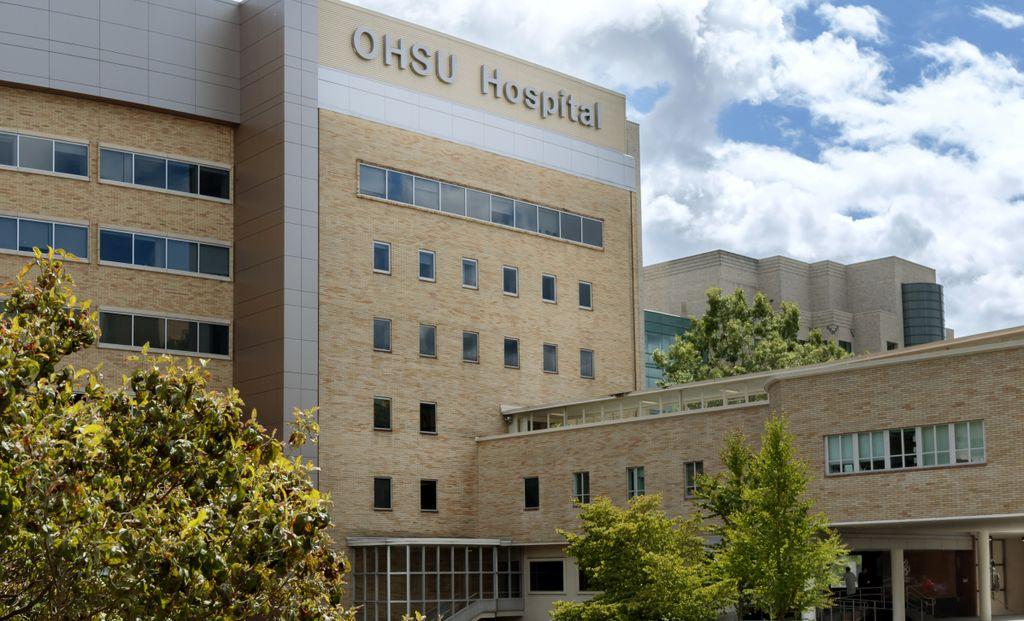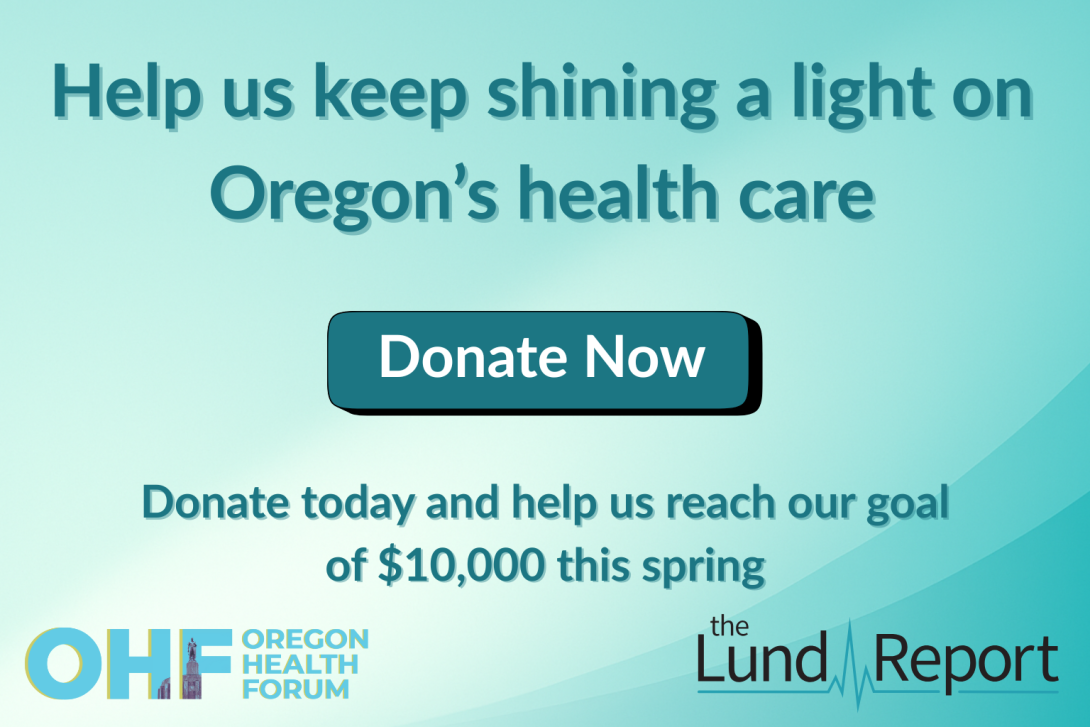
Amid a nationwide and regional shortage of health care professionals, Oregon Health & Science University has cut the size of its incoming physician, physician assistant and pediatric nurse practitioner classes, saying it can’t find enough clinical placements in the region at which students can train.
The cuts, which OHSU said it hopes to reverse in a few years, appear to mark a first in the country. They coincide with a clamoring for newly minted health care professionals to replace the waves of physicians and others who are retiring or stepping down early because they’re burned out. Surveys during the pandemic have indicated that many physicians expect to retire early.
In recent years, OHSU had bumped up the size of its incoming physician and physician assistant classes in response to studies forecasting a dire shortage of health care professionals. But scores of schools around the country have done the same, intensifying the scramble for a limited number of clinical training spots in hospitals, community health centers, specialty groups, clinics and the like, OHSU says.
“East Coast (medical) schools are coming to the West Coast to place their students (in training) because they can’t find space on the East Coast, so that is pushing out the West coast schools. It’s a ripple effect, a domino effect,” said David Robinson, interim OHSU provost, in an interview with The Lund Report.
At the beginning of the pandemic, clinics and hospitals were forced to suspend non-urgent procedures and adopt COVID safety protocols.
As a result, many Oregon health care systems cut back the number of student placements they would accept, said George Mejicano, senior associate dean for education in OHSU’s school of medicine.
With distancing requirements, “all of a sudden, where you could crowd, for example, in a clinic, four people, now you could only crowd two people in,” Mejicano said.
“We were told ‘we can’t take a student right now because we need our people to care for patients.’”
The number of opportunities for students already had fallen in recent years, Mejicano told The Lund Report.
“COVID just made the situation much worse,” Mejicano said.
Hundreds Of Hours Required
Clinical placements – essentially internships – are crucial for students to finish their education and obtain their degree.
An OHSU physician in-training has to have at least 130 weeks of clinical training at clinical sites. A doctor of nursing practice degree, which is needed to be a nurse practitioner, requires 1,000 clinical hours. The students shadow doctors and other professionals, and learn how each site works and the kinds of patients they treat. OHSU places students in all Oregon’s major hospital systems and at facilities elsewhere in the Northwest, Mejicano said.
Like other medical and nursing schools, OHSU has on-campus hospital and clinic facilities where it can provide some students with some training placements. But these are nowhere near enough to meet the volume and types of placements OHSU’s students need, OHSU said.
For this fall, OHSU has cut the incoming class of its physician program from 150 to 140. That followed a cut from a high of 160 to 150 last year. OHSU has reduced its incoming physician assistant program class to 30, down from 42. It has cut its pediatric nurse practitioner incoming class from 14 to 10. The cuts were first announced publicly at OHSU’s board meeting in June.
Decision May Be Unique
OHSU may be the first school in the nation to take this step in response to the lack of student training placements.
The Association of American Medical Colleges knows of no other medical school that has made a similar decision, said association spokesman Stuart Heiser. The association surveys colleges in depth on issues including growing class sizes and the strains these place on the training pipeline. The association represents about 170 medical schools, 400-plus teaching hospitals and more than 70 scientific societies nationwide.
As its members have boosted enrollment in recent years, warnings have been sounded about possible shortages of training placements for students.
A 2019 report by the association said the rapidly increasing number of slots in medical schools has outstripped not only training sites for MD students, but also residency programs for new medical school graduates. Residencies are multi-year training programs at hospitals and medical groups that medical school graduates typically need to complete in order to practice medicine.
Medical schools want their students to gain experience in a wide variety of community health care settings, but finding clinics to volunteer to take student placements “can be a significant challenge,” John Precott, the association’s chief academic officer, said in the report.
OHSU pays some of the biggest systems that take many of its students to cover administrative costs, Mejicano said. But it doesn’t pay other placement sites, he said.
It’s unclear why OHSU, which has a $3.1 billion investment portfolios and ended its fiscal year in the black, is not willing to increase its payments to place students. The institution did not immediately respond to a request for comment.
For health care facilities, accepting student placements has pros and cons. One benefit: The student may later want to work at the facility. One drawback: Employees must take time out of their schedules to mentor the student.
“Traditionally, this was really altruistic by many of the (health care) systems that took students,” Mejicano said. “But over the last 25 years, what’s happened is that systems that are large and take many, many students have realized there is an administrative burden.”
Health care entities run students through personnel and safety procedures, and train them in the specifics of a facility and the use of electronic medical records, for example, Mejicano said. Big health care systems may increasingly be leery of that commitment, according to the Association of American Medical Colleges.
The absorption of smaller independent medical practices into larger health care systems has limited the freedom of doctors to volunteer to take on and mentor students, the association said in a September 2020 report. Working in big medical systems, doctors may have to meet billing targets that make teaching an onsite student a near impossibility, the report said.
Mejicano said many health care systems, under financial pressure, are pushing physicians and physician assistants to be more productive and see more patients.
“You have more (student) learners at a time when (doctors) are under immense pressure to see as many (patients) as they can,” he said. “Learners add benefits, but from a productivity perspective they tend to slow things down.”
Enrollment Soars
Total enrollment at schools for medical doctors in the United States reached about 94,000 in the last academic year, up from over 80,000 nine years earlier, the association said. In 2020, U.S. medical schools pumped out more than 20,000 new doctors, up from over 17,000 in 2012, according to the association.
Nationwide, schools in recent years have opened dozens of new programs to produce physician assistants, according to published reports. There are now about 125,000 of them working in the United States, up from about 83,000 in 2010, available statistics suggest. Physician assistants – like nurse practitioners – diagnose and treat patients and prescribe medication. They often serve as primary providers, and are in high demand.
“The number of new physician assistants has exploded over the last five years. All of those schools need to place their students somewhere. So you basically have flooded the market with PA students,” OHSU’s Robinson said. “They are competing with themselves and with other (medical) professions for the same clinics and other locations.”
Plans To Reverse Course
Mejicano said OHSU is working to recoup training placements for students. The school is trying to persuade clinics and other facilities to renew their placement programs, and is looking for new training opportunities – for example in long-term care settings, or having students sit in on telehealth consultations that have boomed in popularity with the pandemic, he said.
Uppermost for OHSU is ensuring the placements are of high quality and train students in fields where there will be demand, Mejicano said.
For OHSU, cutting its incoming class sizes was a bitter reversal.
Mejicano said that in 2012, when he arrived at OHSU, the incoming physician class stood at 120. “We deliberately expanded to 160 to match our workforce projections,” he said.
Robinson said OHSU’s physician assistant class size was about 35 two decades ago. “Pre-COVID it was 42. The intention was always to go beyond 42,” he said. Meanwhile, OHSU launched its pediatric nurse practitioner program only about four years ago.
OHSU has about 3,000 students, including 600 in the medical school. Others are studying public health, dentistry and various types of nursing. Most are required to have student placements.
OHSU has only cut incoming class sizes for medical doctors, physician assistants and pediatric nurse practitioners..
“All of our health professions programs are struggling to find all the necessary (student) placements they need,” Robinson said. “All the other programs so far haven’t hit that critical threshold where they are having to contemplate reducing the class size temporarily,” he said.
You can reach Christian Wihtol at [email protected].
Correction: This story has been corrected to reflect the number of clinical time required for physicians or for an advanced nursing degree.

Hi, I'm in a masters level NP program and they require over 600 hrs of clinical. I'm sure the DNP would have many more hours. I'm not sure where your source got their information from, but it is absolutely incorrect. I would appreciate a correction and more careful reporting. Thank you.